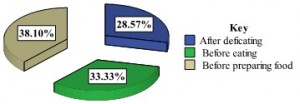This project is part of Bridge Water Project's program in Western Kenya. What follows is direct from them:
BACKGROUND
The proposed Mwonyonyi Community Water Project is a drilled well that was sunk in the year 1986. The well was drilled on one of the community members land, Mr. Kalawanga. He accepted the request for the well to be drilled on his land because he knew and understood the water problems that the community had and to what extent they had to go to, get water.
The total depth of the well is 54M. It was cased with a 5’’casing and an Indian Mark II pump was installed. The well served the community members for 14 years until when it broke down in the year 2000. The community members made some repairs but the pump broke down again. Due to too much repairs, the pump could no longer be salvaged. The pump was then dismantled from the well and kept by the then chairman of the water committee.
Due to the fact that the community does not have access to quality and easily accessible water, the community members came together and requested BWP to help them rehabilitate their well. The community has not been able to access the water from the well for the past 13 years. After an official request from the community, BWP has decided to provide an affridev pump and install it so that the community can have access to quality and safe water.
CURRENT WATER SOURCE
The community currently gets water from Mwonyonyi River, which is located 11/2km from the community. The Stream is open thus prone to all sorts of contamination. The community members also use the river water for their animals. Using the same water source for human and animal consumption is not hygienic and can cause various illnesses. The water is not clear and has a turbidity value of 80, which is well below 5, the required WHO (World Health Organization) requirement.
POPULATION
The community has 35 household. These households have approximately 8 members each. The pie chart below shows households that are headed by women.
Female-headed households
HYGIENE AND SANITATION
Hand washing practices
The pie chart below shows a breakdown in percentages of when community members wash their hands.
All the community households have latrines and bath sheds. They survey showed that the community members used the latrines and bath sheds.
Out of all the homesteads visited, only one of them had an improvised hand washing station outside the latrine.
All the homesteads visited had utensil racks.
Cases of typhoid and diarrhea in children are very common in the community.
WATER COMMITTEE
The water source does not have a water committee but through the intervention of Bridge Water Project, the community members will vote and come up with a new water committee. The committee will comprise of the local leadership and community members.

 Rehabilitation Project
Rehabilitation Project
















